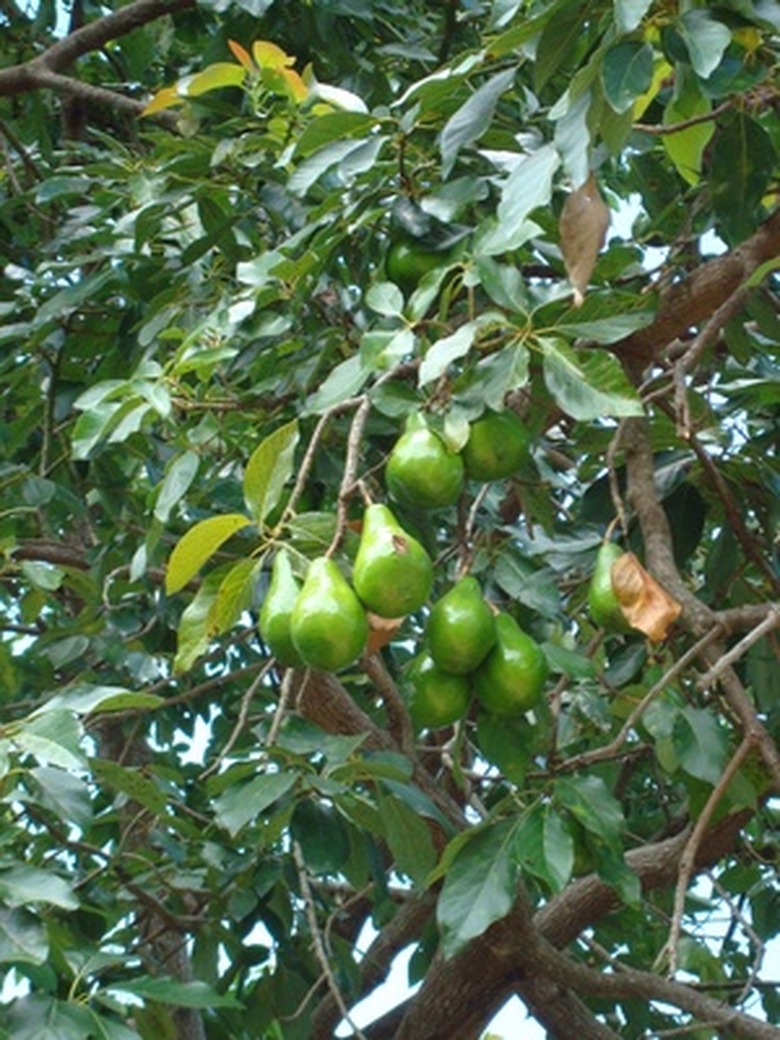How To Grow Avocados In Houston
Things Needed
- Organic matter
- Sand
- Shovel
- Wire cage
- Burlap
- Ammonium sulfate fertilizer
- Blanket
Planting avocado trees in the clay-like soil of Houston often leads to failure. Choose an appropriate planting site and prepare the soil properly to ensure success. Avocados will grow in shade, but thrive only in full sun, which makes Houston–with an excess of 200 sunny days per year–an ideal environment. Once established, avocados are a hardy tree and live in excess of 30 years.
Step 1
Select a location that receives direct sunlight. Plant the tree on the south or southeast side of a building to provide adequate sun exposure. Plant the tree at least 10 feet away from a building and 15 to 25 feet away from another large tree.
Step 2
Mix in 3 to 4 inches of organic matter and 3 to 4 inches of sand to the planting site to improve the drainage of Houston's clay soil. Amending the soil is critical because Houston receives an average of 51 inches of rain per year, and avocado trees cannot tolerate standing water on their roots.
Step 3
Plant the tree by digging a hole that is twice as wide as the container and no deeper than the root ball. Place the tree in the hole, refill the hole with soil and water thoroughly. Build a mound of soil at least 4 inches high around the trunk.
Step 4
Provide proper shading for the tree by placing a burlap-covered cage 1 foot above the tree for the first several months after planting. Houston's average temperature in the summer is higher than 90 degrees F, and sunburn is a leading cause of death in newly planted avocado trees.
Step 5
Water the tree deeply and thoroughly by running the water hose at a trickle for a few hours. To determine if watering is necessary, dig a hole that is a few inches deep. Grab a handful of soil and squeeze the soil in your palm. If the soil sticks together, watering is not necessary. If the soil crumbles, water the tree. Do not allow water to stand around the tree for more than a few hours. Root rot is the most common cause of avocado tree failure.
Step 6
Apply ammonium sulfate fertilizer (21-0-0) monthly from February through September. During the first year, apply 1/2 cup. In the second year, apply 1 cup. Throughout the third year, apply 2 cups. Each following year, measure the diameter of the trunk and multiply by 1 to 2 cups of fertilizer. Divide this amount into equal applications and apply in February, May and September.
Step 7
Place an additional mound of soil around the trunk for extra protection from a freeze. Houston experiences an average of 19 days with freezing temperatures per year with the majority coming in January. Water the tree thoroughly two or three days before the cold weather arrives. Cover young trees with a blanket during the freeze event.
Tip
Avocado trees normally produce fruit one to two years after planting.
